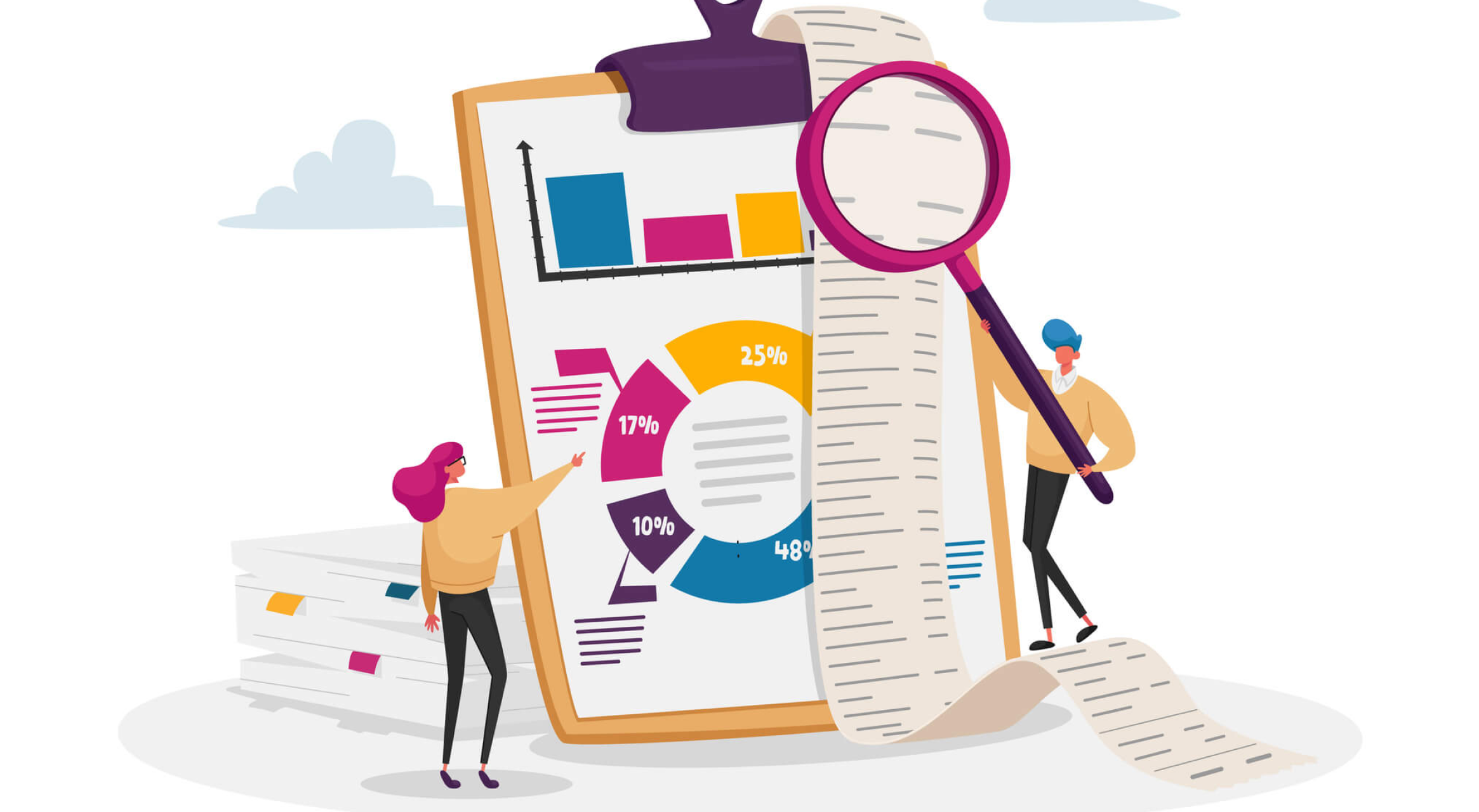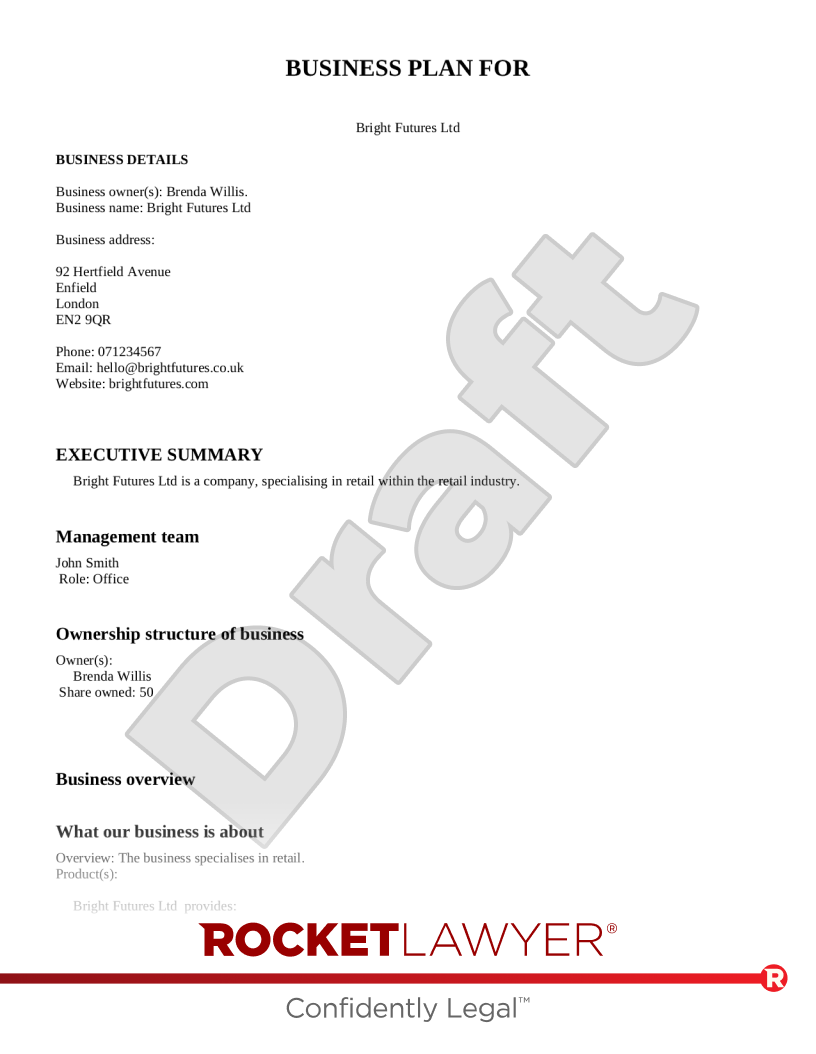What is financial information?
For the purposes of a business plan, financial information refers to a comprehensive set of data and projections that provide a detailed overview of the financial aspects of the business.
Financial information encompasses various figures essential for understanding the economic viability and sustainability of the proposed venture. This information includes future projections, such as revenue forecasts, expense estimates and cash flow predictions. These projections serve as a roadmap for the financial growth and stability of the business. This helps stakeholders, including investors and lenders, to assess the feasibility and potential profitability of the business.

What financial information is relevant and why?
Investors like to see that you’ve done your sums. Including detailed financial information proves that you have a grasp of the all-important monetary aspects of running a business. Unless you’re setting up a charity or social enterprise, you need to be aiming towards making a healthy profit.
Projections you must include in your proposal, as part of a detailed financial plan, include:
-
employee wages and salaries
-
overhead costs (eg the rent payments for commercial premises or the costs of hiring or purchasing equipment and machinery)
-
revenue and sales
-
percentage of return you expect from your new goods or services
-
when you expect that your business will produce enough revenue to cover all costs (ie the break-even point)
How can financial information be forecasted?
When you’re making a business proposal, you won’t have access to historical data. As a result, to forecast your business’s financials you will have to conduct thorough market research, which will help you analyse the market you wish to operate in and develop a clear strategy. You should also review any other publicly available information to help inform your financial projections.
Generally speaking, you should begin with conservative estimates and simple calculations. Remember that you can always add to the financial projections over time as more data becomes available.
While some businesses’ projections may be more detailed than others, financial forecasts typically address:
Cash flow forecasts

A cash flow forecast is one of the most important elements of a financial plan. The amount of capital you require can be largely determined from accurate predictions of cash flow.
Even if your profit is high, a lack of readily available money can lead to major problems including insolvency. An example could be if you’re waiting for substantial Invoices to be paid; you may be owed a lot but, without cash in the bank, you won’t be able to manage your immediate expenses.
You can use a spreadsheet program (eg Excel) to create your cash flow forecast. This will also allow you to keep it regularly updated once you start trading.
The simplest way to forecast cash flow is to list monthly income and expenditure costs, preferably with annual totals. You can also separate these figures out into various sections (eg operational expenditure and bill payments).
Try to think pragmatically and account for all kinds of variables. For example, you’ll probably need to use more heating over the winter months so your expenditure on gas and electricity will increase. Similarly, if your product is seasonal (eg ice cream or mulled wine) then you’ll need to revise your income in response to the seasons.
A free cash flow forecast template is available on the Start Up Loans website.
Profit and loss statements

A profit and loss statement (also known as a ‘P&L statement’ or an ‘income statement’) indicates how well a business has performed overall. It differs from a cash flow forecast in that it shows how much profit has been made or the amount of loss sustained over a specified period (usually a year) - or predictions of such. It does not account for actual cash in the bank at a given time. They cover a broader range of factors than cash flow forecasts, for example, depreciation in the value of assets over a period of time.
P&L statements are typically presented in the form of a table with different line items for each category. These include:
-
sales projections - ie how well you believe your business will perform in terms of sales. This is typically broken down by sales forecast for each individual product or service a business provides per month
-
expense projections - ie what you project your expenses will be per month. This is typically broken down by expense category, including recurring expenses (eg payroll, rent, and marketing expenses) and variable expenses (eg for the purchase of raw materials and transportation costs)
Balance sheets

A balance sheet provides a snapshot of a business’s financial position at a specific moment. It consists of three key elements:
-
assets - this is what the business owns. It includes tangible items of value that the business currently possesses or anticipates in the future (eg cash, inventory, equipment and accounts receivable) and intangible assets (eg copyrights, trade marks, patents, and trade secrets)
-
liabilities - this is everything the business owes. For example, taxes, wages, accounts payable, dividends and unearned revenue (eg payments for undelivered goods)
-
(shareholder) equity - this is a representation of the value of the financial resources that have been invested in the business by shareholders and is calculated by subtracting total liabilities from total assets. It indicates how much capital would remain if all liabilities were settled at once or if the business were liquidated. Equity may be negative if the business’ liabilities are greater than its assets
What are a business’s financial requirements?
A business’s financial requirements are the financial needs the business has. This refers to the amount of money the business requires to operate and is normally how much investment you are seeking in order to start your business. When seeking the funding you need to meet your business’s financial requirements, you should keep various points in mind:
-
you can just ask for a set figure if you require funding over a long period. Alternatively, you could detail the initial amount needed to get the business off the ground and agree to further investment contingent upon a certain level of performance over a specified period
-
state a realistic repayment period in your Business plan. It’s better to overstate the time required to avoid disappointment and to show that you have taken into account different possible scenarios.
-
an investor will want to know exactly why you need their money and what it will be spent on. You may have an excellent business idea, but you’ll often have to prove that the funding sought will directly lead to success and that it’s actually required in the first place (eg that you don’t have savings or personal assets you could use instead)
What is a return on investment?

Return on investment (ROI) is a financial metric used to evaluate the profitability and efficiency of an investment. It is a key element of any Business plan as it shows how much effect an investment will have on the business and how beneficial it is likely to be for the investor.
ROI is calculated by dividing the net gain or loss from an investment by its initial cost and expressing the result as a percentage. Many ROI calculators are available online (eg Experian’s ROI calculator), which can help you work out an investor’s anticipated ROI.




